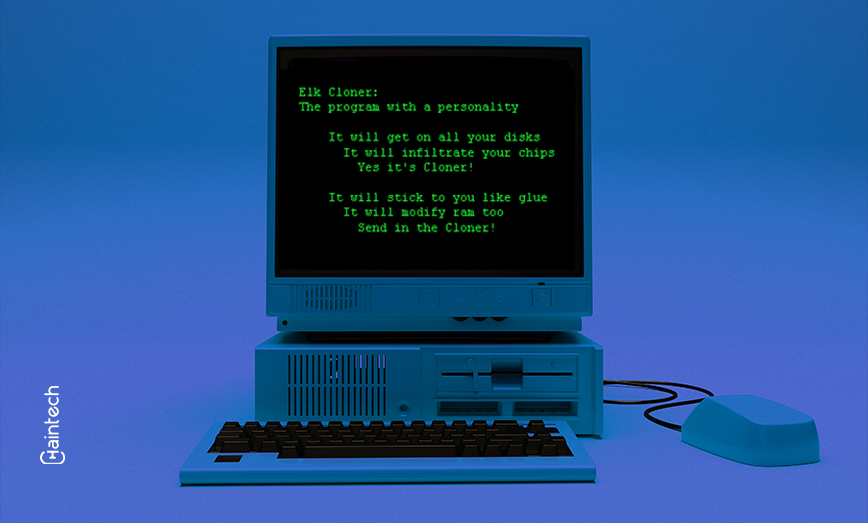Year 1982: Exploring Elk Cloner, the First Computer Virus

Introduction
In the early days of computing, viruses were relatively benign and often created as pranks by teenage tech enthusiasts. These individuals, with a keen interest in the burgeoning field, seized the opportunity to experiment with computer viruses shortly after the introduction of personal computers. Among them was Rich Skrenta, who crafted Elk Cloner, the first computer virus known for its ability to spread beyond its initial confines, marking a significant milestone in the history of computer security.

The Birth of Elk Cloner
In February 1982, Rich Skrenta, a 15-year-old tech-savvy boy, wrote a code and stored it on a floppy disc with a simple intention: to prank his friends. Skrenta, known for his mischievous exploits in altering computer game discs with taunts and messages, decided to innovate after some friends became wary of accepting discs from him.
This innovation took shape as Elk Cloner, the first-known computer virus tailored for Apple II systems, a household technology staple of the era. Skrenta invested significant effort in crafting Elk Cloner, which operated as a “boot sector” virus, marking a new phase in computer pranks and unintentionally, the dawn of computer viruses.
With Elk Cloner ready for distribution, Skrenta began circulating it among his school friends and acquaintances. The virus targeted the boot sector of various storage media including HDDs, SDDs, flash drives, and floppy discs. Once an Apple II system booted from an infected disc, Elk Cloner permanently embedded itself into the system’s memory.
Furthermore, any uninfected disc inserted into the system would become a carrier as the virus replicated and copied itself onto the new medium. Notably, every 50th boot from an infected disc resulted in the screen going blank, followed by the display of a poem (also written by Skrenta) for the user, adding an additional layer of intrigue to its effects.
The poem:
Elk Cloner: The program with a personality
It will get on all your disks It will infiltrate your chips Yes it’s Cloner!
It will stick to you like glue It will modify ram too Send in the Cloner!
The Great Escape
Elk Cloner, despite its rapid spread, was largely harmless. Its notoriety stemmed mainly from its ability to break out of the system where it originated. Referred to as “innocent,” this virus earned its moniker because it didn’t wreak havoc and was conceived purely for playful pranks rather than malicious intent.
Elk Cloner, despite its primitive nature, demonstrated a clever mechanism for controlling its spread. When infecting a new device, it left a distinct mark in the host’s disc directory, indicating that a specific operating system had been infected. This prevented the operating system from being inadvertently modified whenever a disc was accessed.
This approach enabled users to “inoculate” uninfected operating systems by deliberately adding the signature to the disc, thereby signaling to the virus that the system had already been infected and preventing further spread.
Elk Cloner was initially just a gossip circulating among a group of teenagers and did not garner widespread attention or coverage in newspapers. It began as a prank played by a teenager on his friends, rather than a significant event. However, a few years later, the story gained prominence when its creator, Rich Skrenta, wrote a letter to Scientific American Magazine discussing the subject. This letter brought attention to Skrenta’s childhood creation and its significance in the history of computer viruses.









